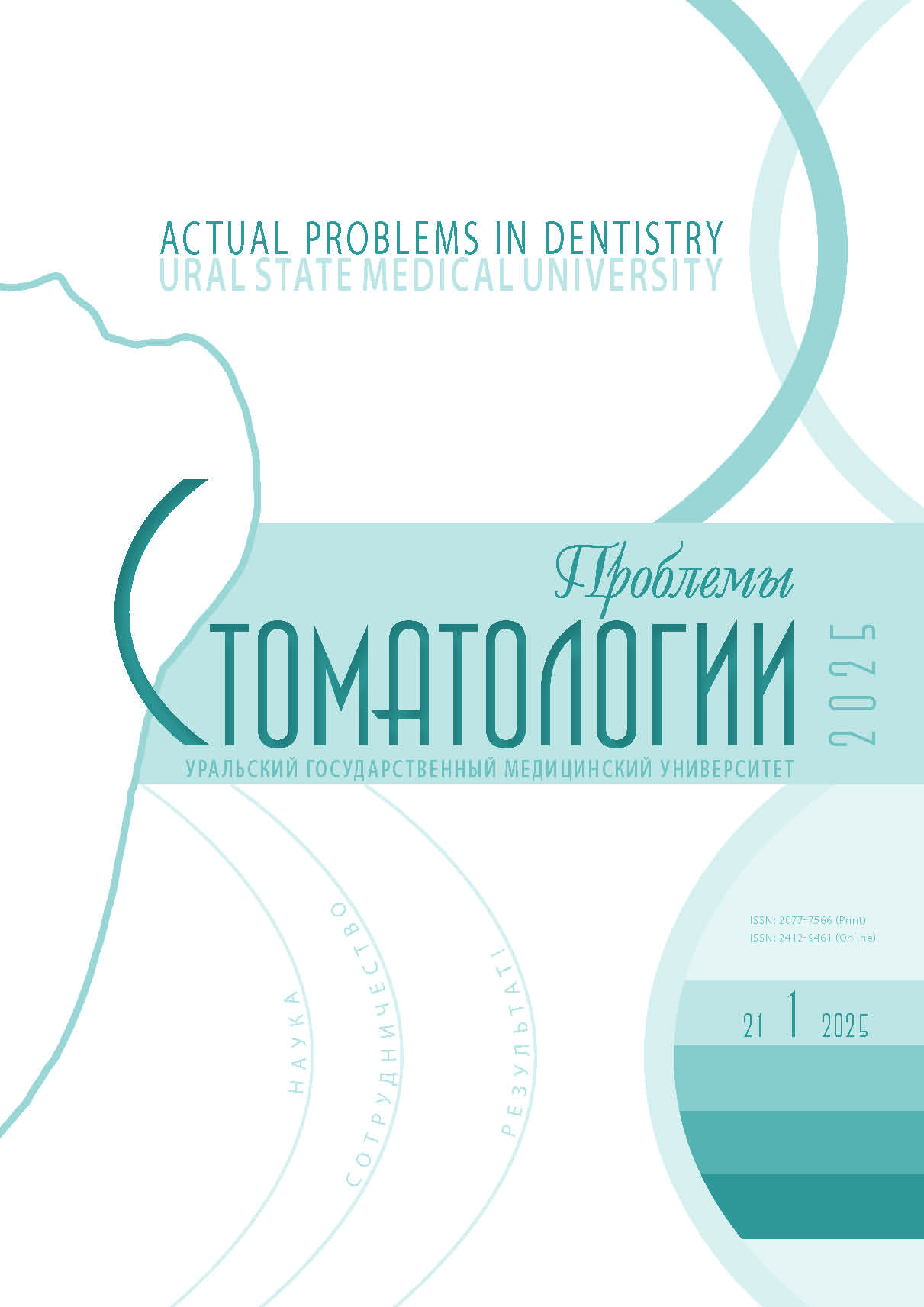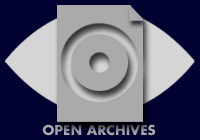graduate student
Nizhny Novgorod, Nizhny Novgorod, Russian Federation
Nizhniy Novgorod, Nizhny Novgorod, Russian Federation
Nizhny Novgorod, Nizhny Novgorod, Russian Federation
employee
Nizhny Novgorod, Nizhny Novgorod, Russian Federation
Nihny Novgorod, Nizhny Novgorod, Russian Federation
student
Nizhny Novgorod, Nizhny Novgorod, Russian Federation
student
Nizhny Novgorod, Nizhny Novgorod, Russian Federation
UDC 616.31
Burning mouth syndrome, BMS (glossalgia, glossodynia, glossopyrosis) is a complex clinical syndrome characterized by a burning sensation and discomfort in the oral cavity, which can significantly worsen the quality of life of patients. The main manifestations of BMS include burning of the tongue, gums and oral mucosa, xerostomia, and dysgeusia - a change in taste. Despite the fact that this pathology is most often observed in postmenopausal women, its etiology remains unclear and may include both systemic diseases and local factors. An important link in the pathogenesis of BMS is a violation of the microcirculation of the oral mucosa and tongue, which leads to the development of burning and paresthetic changes in the oral cavity. Pharmacological treatment of BMS is often ineffective, which emphasizes the need to search for new approaches to therapy. Recently, the attention of researchers has been drawn to oral hygiene items, among which a special place is occupied by cleaning the tongue using scrapers. Despite the existence of a number of studies devoted to the effectiveness of various oral hygiene products in the complex treatment of BMS, the issues of the effectiveness of tongue scrapers, including their possible impact on the microcirculation of the mucous membrane, remain insufficiently studied. The present study is aimed at studying the effectiveness of using tongue scrapers with a gold-zinc galvanic couple in the complex treatment of patients with BMS. The data obtained showed that the local action of microcurrents when using a scraper with a gold-zinc galvanic couple improves microcirculation in the mucous membrane of the tongue, which provides a new approach to the treatment of patients with this complex and multifaceted syndrome.
burning mouth syndrome, tongue scraper, scraper with a gold-zinc galvanic pair, oral hygiene, microcirculation of the mucous membrane
1. Zhulev E.N., Tiunova N.V., Lukinyh L.M. Korrekciya psihoemocional'nogo sostoyaniya bol'nyh stomalgiey. Kubanskiy nauchnyy medicinskiy vestnik. 2015;(3):55-57. [Zhulev E.N., Tiunova N.V., Lukinyh L.M. Correction of psychoemotional status of the patients with burning mouth syndrome. Kuban Scientific Medical Bulletin. 2015;(3):55-57. (In Russ.)]. https://elibrary.ru/item.asp?id=23942235
2. Karakov K.G., Hachaturyan E.E., Vlasova T.N., Ogonyan A.V., Hachaturyan A.E., Harina P.A. i dr. Ocenka effektivnosti primeneniya gomeopaticheskogo preparata novogo pokoleniya pri lechenii glossalgii. Problemy stomatologii. 2018;14(2):30-34. [Karakov K.G., Khachaturyan E.E., Vlasova T.N., Ogonyan A.V., Khachaturyan A.E., Kharina P.A. et al. Evaluation of effectiveness of the use of homeopathic preparation of new generation at treatment of glossalgy. Actual problems in dentistry. 2018;14(2):30-34. (In Russ.)]. https://doi.org/10.18481/2077-7566-2018-14-2-30-34
3. Saperkin N.V., Tiunova N.V., Sergeeva A.V. Kliniko-epidemiologicheskaya harakteristika sindroma «pylayuschego rta» na regional'nom urovne. Medicinskiy al'manah. 2017;(4):142-144. [Saperkin N.V., Tiunova N.V., Sergeeva A.V. Clinical and epidemiological characteristics of the “burning mouth” syndrome at the regional level. Medicinskij alʹmanah. 2017;(4):142-144. (In Russ.)]. https://elibrary.ru/item.asp?id=30114701
4. Kohorst J.J., Bruce A.J., Torgerson R.R., Schenck L.A., Davis M.D.P. The prevalence of burning mouth syndrome: a population-based study The British journal of dermatology. 2015;172(60):1654-1656. https//doi/10.1111/bjd.13613
5. Wu S., Zhang W., Yan J., Noma N., Young A., Yan Z. Worldwide prevalence estimates of burning mouth syndrome: a systematic review and metaanalysis. Oral diseases. 2022;28(6):1431-1440. https://doi.org/10.1111/odi.13868
6. Su N.Y., Wang Y.H., Chang Y.C. A nationwide register-based study of the prevalence of burning mouth syndrome in Taiwan from 2004 to 2013. Journal of dental sciences. 2021;16(4):1074-1079. https://doi.org/10.1016/j.jds.2021.06.020
7. Jaaskelainen S.K., Woda A. Burning mouth syndrome. Cephalalgia. 2017;37(7):627-647. https://doi.org/10.1177/0333102417694883
8. Forssell H. Jaaskelainen S., List T., Svensson P., Baad-Hansen L. An updateon pathophysiological mechanisms related to idiopathic oro-facial pain conditions with implications for management. Journal of oral rehabilitation. 2015;42(4):300-322. https://doi.org/10.1111/joor.12256
9. Uspenskaya O.A., Tiunova N.V., Zhdanova M.L., Potehina Yu.P. Izmeneniya temperatury yazyka u bol'nyh s sindromom "pylayuschego rta" na fone kompleksnogo lecheniya. Vyatskiy medicinskiy vestnik. 2018;(3):96-99. [Uspenskaya O.A., Tiunova N.V., Zhdanova M.L., Potekhina Yu.P. Dynamics of changes in the indicators of infrared thermometry in patients with the burning mouth syndrome on the background of complex treatment with application of photoneuromodulation. Vâtskij medicinskij vestnik. 2018;(3):96-99. (In Russ.)]. https://www.elibrary.ru/item.asp?id=36528297
10. Habibova N.N., Olimova D.V. The efficiency of glossalgia and stomatalgia complex treatment. Biology and Integrative Medicine. 2021;(6):374-379. https://www.elibrary.ru/item.asp?id=47937807
11. Tereschenko A.V., Dzhapueva A.Ya. Glossalgiya/glossodiniya kak mezhdisciplinarnaya problema. Klinicheskaya dermatologiya i venerologiya. 2021;20(1):19-25. [Tereshchenko A.V., Dzhapueva A.Ya. Glossalgy/glossodiny as an interdisciplinary problem. Russian Journal of Clinical Dermatology and Venereology. 2021;20(1):19-25. (In Russ.)]. https://doi.org/10.17116/klinderma20212001119
12. Abdikarimov S.Zh., Abdikarim S.S., Zhumabaeva K.Zh. Osobennosti proyavleniya glossalgii pri somaticheskih zabolevaniyah. Optimizaciya i vybor metoda lecheniya. Farmaciya Kazahstana. 2023;(5):16-24. [Abdikarimov S.Zh., Abdikarim S.S., Zhumabaeva K.Zh. Features of glossalgia manifestation in somatic diseases. Optimization and selection of treatment method. Pharmacy of Kazakhstan. 2023;(5):16-24. (In Russ.)]. https://elibrary.ru/item.asp?id=55049878
13. Capaeva N.L., Capaev V.G. Mikrocirkulyaciya (Chast' 3 – metody issledovaniya mikrocirkulyacii). Neotlozhnaya kardiologiya i kardiovaskulyarnye riski. 2024;8(2):2224-2236. [Tsapaeva N.L., Tsapaev V.G. Microcirculation (Part 3 – methods of microcirculation assessment). Emergency cardiology and cardiovascular risks. 2024;8(2):2224-2236. (In Russ.)]. https://doi.org/10.51922/2616-633X.2024.8.2.2224



















